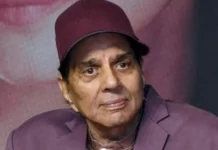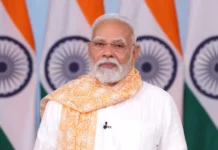 NEW YORK: The Indian apparel industry is witnessing an upswing and the exports are likely to go up from USD 13 billion last year to USD 17 billion in the next two years on the back of economic recovery in the US and Europe, according to Apparel Export Promotion Council.
NEW YORK: The Indian apparel industry is witnessing an upswing and the exports are likely to go up from USD 13 billion last year to USD 17 billion in the next two years on the back of economic recovery in the US and Europe, according to Apparel Export Promotion Council.
“Indian apparel exports have picked up in the last six months compared to negative growth in the previous two years,” A Sakthivel, Chairman of Apparel Export Promotion Council (AEPC), told PTI on the sidelines of the Buyer-Seller meet inaugurated by Indian Consul General in New York Dnyaneshwar Mulay at Penn Plaza Pavilion in Manhattan.
About 30 apparel manufacturers from across India are showcasing their readymade garments to American buyers at a two-day Fashion Buyer-Seller Meet, which began on Wednesday.
The event is being organized by AEPC of the Ministry of Textiles in New York.
The orders that went to neighboring countries came to India due to industry compliance issues in those nations, resulting into huge business, he said.
“The Indian apparel industry is compliance-oriented and we follow all the rules of the game. The atmosphere looks good now and these factors have helped a lot besides depreciation of rupee that is helping the industry to a certain extent,” Sakthivel said.
At the same time, the manufacturing cost is also going up simultaneously due to the depreciation of rupee, he said.
The coming years will be a boom period for the Indian apparel manufacturers amid the industry growing by 14 per cent till August this year, AEPC chairman said.
On competition from China, he said Beijing is one of the biggest competitors for India but the cost of manufacturing has gone up over the years in that country.
“We also see a shift in workers interest who does not want to stick to the garment industry. Laborers are moving away from the garment industry to sectors like IT. All these factors are pushing up the cost of the final product.
“India is known for value added exports like embroidery sequence and especially ladies wear. The country has always been a key player in cotton apparel exports. The neighboring countries are not very competitive in this segment, he said.
Besides, traditional centers like Tirupur and Jaipur, units in Delhi, Noida, Ludhiana, Bengaluru and Chennai are doing well. The units in Mumbai are moving towards South especially to Bengaluru due to high cost.
Sakthivel, also a prominent exporter from Tirupur in Tamil Nadu, said Tirupur has seen increase in exports to the tune of 15 per cent in the last six months and the city’s USP still remains knit wear, which is being sold to all the major retail stores and outlets in the US and Europe. . On the issue of power shortage in Tamil Nadu, he said the industry does not need much power and moreover the situation has improved now.
Tamil Nadu is improving in power and there is no concern in that front, he said.
On up-gradation of skill sets of workers, he said AEPC has started 175 training centers all across the nation to impart training.
These Apparel Training and Designing Centers not only train workers and supervisors but impart latest knowledge, he added.
Sakthivel, who was made Chairman of the Prime Minister Special Sector Skill Council in apparels, said the Government of India gives top priority to industry upgradation and knowledge improvement.
He said universities and engineering colleges play a key role in providing trained manpower and also assist the industry in honing up the skill set of workers.
“For instance, there are 12 colleges in Coimbatore that impart various courses in textiles, fashion design, machinery and tools and graduates are absorbed immediately.
“The pollution of textile units has no longer been an issue in the last two years as all the units are upgraded to the satisfaction of the government and the industry,” he added.
Indian apparel manufacturers have become global players and most units are global compliance-oriented.
The American and European buyers have expressed utmost satisfaction as we are WRAP and ISO 9000 certified to meet the stringent needs of the industry.
Indian exporters are in touch with US buyers and have traditional understanding as we are good into deliveries and adherence to compliance, he said.
Sakthivel, who took over as AEPC Chairman for the third time in 2012, said he helped shape the direction of the industry from doing business with traditional players to venturing into new markets.
“We went to Japan, South Africa, South America, Israel and Australia to name a few with a view to improving business in non-traditional markets,” he said. -PTI





